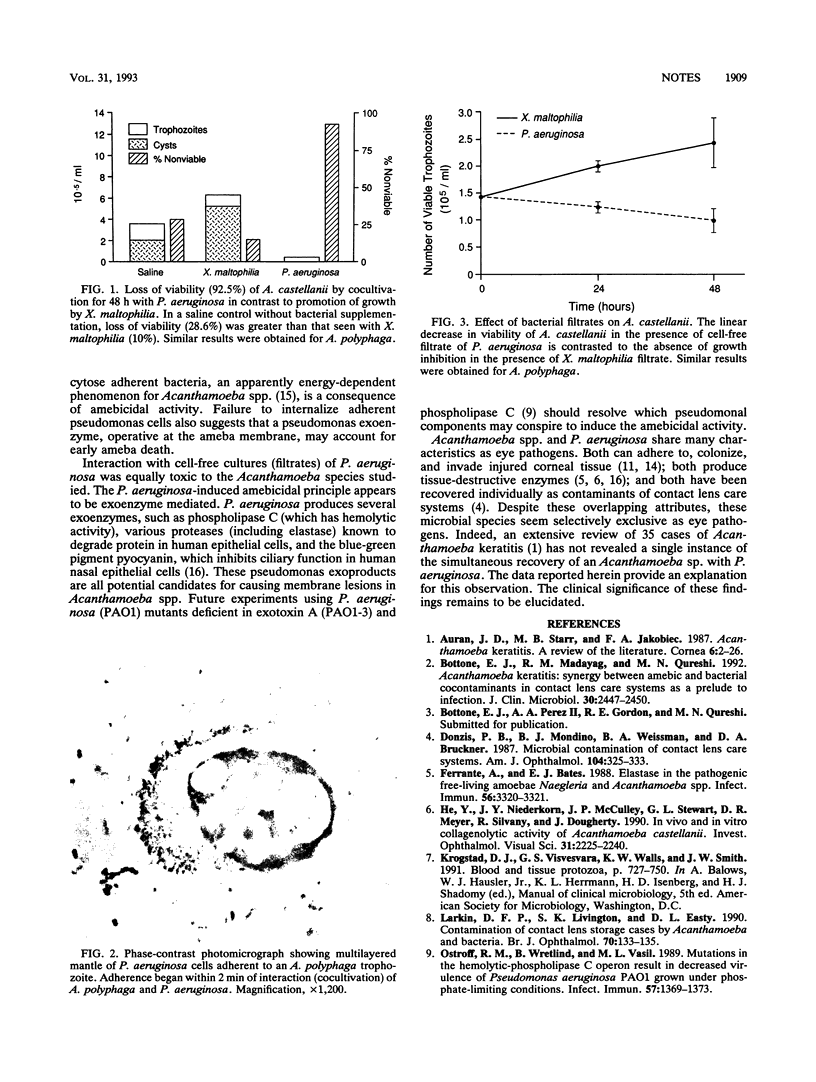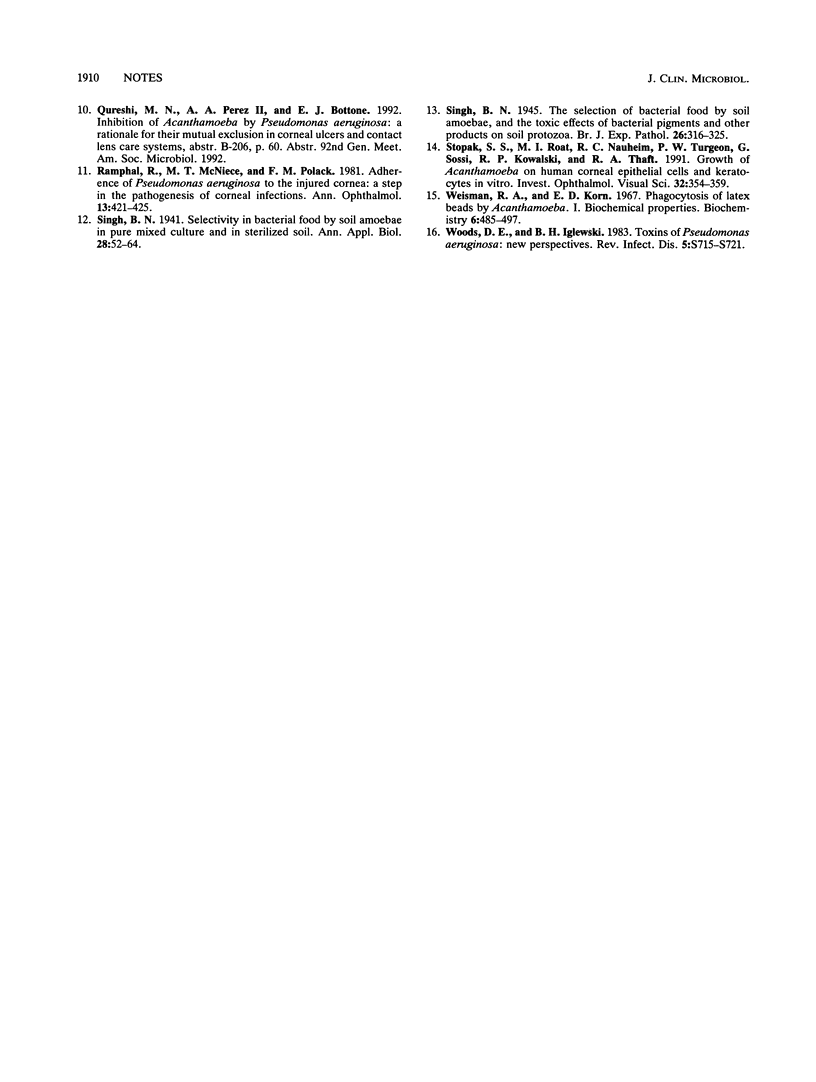Abstract
Cocultivation of Acanthamoeba castellanii and Acanthamoeba polyphaga with live Pseudomonas aeruginosa and with broth filtrates of P. aeruginosa proved equally lethal to the Acanthamoeba spp. The P. aeruginosa-induced amebicidal activity is apparently toxin mediated and has two operative modes: it can function through binding of P. aeruginosa to the ameba membrane and in the presence of one or more P. aeruginosa exoproducts.
Full text
PDF


Images in this article
Selected References
These references are in PubMed. This may not be the complete list of references from this article.
- Auran J. D., Starr M. B., Jakobiec F. A. Acanthamoeba keratitis. A review of the literature. Cornea. 1987;6(1):2–26. [PubMed] [Google Scholar]
- Bottone E. J., Madayag R. M., Qureshi M. N. Acanthamoeba keratitis: synergy between amebic and bacterial cocontaminants in contact lens care systems as a prelude to infection. J Clin Microbiol. 1992 Sep;30(9):2447–2450. doi: 10.1128/jcm.30.9.2447-2450.1992. [DOI] [PMC free article] [PubMed] [Google Scholar]
- Donzis P. B., Mondino B. J., Weissman B. A., Bruckner D. A. Microbial contamination of contact lens care systems. Am J Ophthalmol. 1987 Oct 15;104(4):325–333. doi: 10.1016/0002-9394(87)90219-4. [DOI] [PubMed] [Google Scholar]
- Ferrante A., Bates E. J. Elastase in the pathogenic free-living amoebae Naegleria and Acanthamoeba spp. Infect Immun. 1988 Dec;56(12):3320–3321. doi: 10.1128/iai.56.12.3320-3321.1988. [DOI] [PMC free article] [PubMed] [Google Scholar]
- He Y. G., Niederkorn J. Y., McCulley J. P., Stewart G. L., Meyer D. R., Silvany R., Dougherty J. In vivo and in vitro collagenolytic activity of Acanthamoeba castellanii. Invest Ophthalmol Vis Sci. 1990 Nov;31(11):2235–2240. [PubMed] [Google Scholar]
- Larkin D. F., Kilvington S., Easty D. L. Contamination of contact lens storage cases by Acanthamoeba and bacteria. Br J Ophthalmol. 1990 Mar;74(3):133–135. doi: 10.1136/bjo.74.3.133. [DOI] [PMC free article] [PubMed] [Google Scholar]
- Ostroff R. M., Wretlind B., Vasil M. L. Mutations in the hemolytic-phospholipase C operon result in decreased virulence of Pseudomonas aeruginosa PAO1 grown under phosphate-limiting conditions. Infect Immun. 1989 May;57(5):1369–1373. doi: 10.1128/iai.57.5.1369-1373.1989. [DOI] [PMC free article] [PubMed] [Google Scholar]
- Ramphal R., McNiece M. T., Polack F. M. Adherence of Pseudomonas aeruginosa to the injured cornea: a step in the pathogenesis of corneal infections. Ann Ophthalmol. 1981 Apr;13(4):421–425. [PubMed] [Google Scholar]
- Stopak S. S., Roat M. I., Nauheim R. C., Turgeon P. W., Sossi G., Kowalski R. P., Thoft R. A. Growth of acanthamoeba on human corneal epithelial cells and keratocytes in vitro. Invest Ophthalmol Vis Sci. 1991 Feb;32(2):354–359. [PubMed] [Google Scholar]
- Weisman R. A., Korn E. D. Phagocytosis of latex beads by Acanthamoeba. I. Biochemical properties. Biochemistry. 1967 Feb;6(2):485–497. doi: 10.1021/bi00854a017. [DOI] [PubMed] [Google Scholar]
- Woods D. E., Iglewski B. H. Toxins of Pseudomonas aeruginosa: new perspectives. Rev Infect Dis. 1983 Sep-Oct;5 (Suppl 4):S715–S722. doi: 10.1093/clinids/5.supplement_4.s715. [DOI] [PubMed] [Google Scholar]



